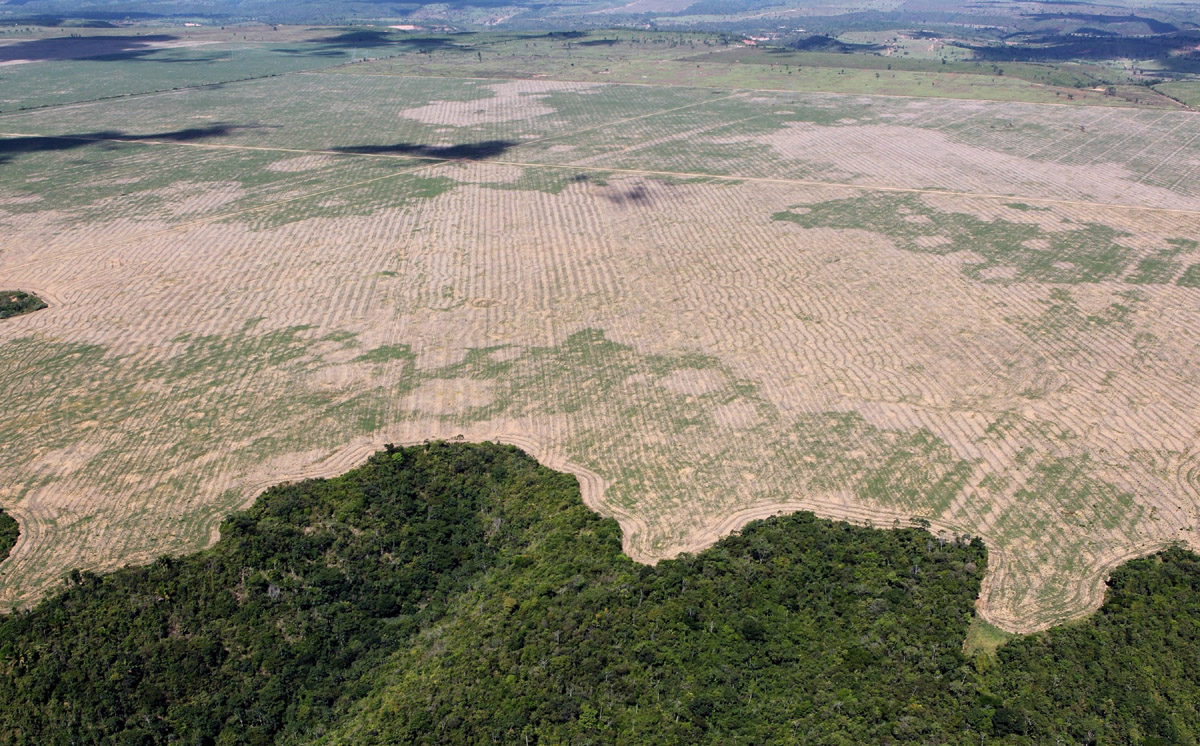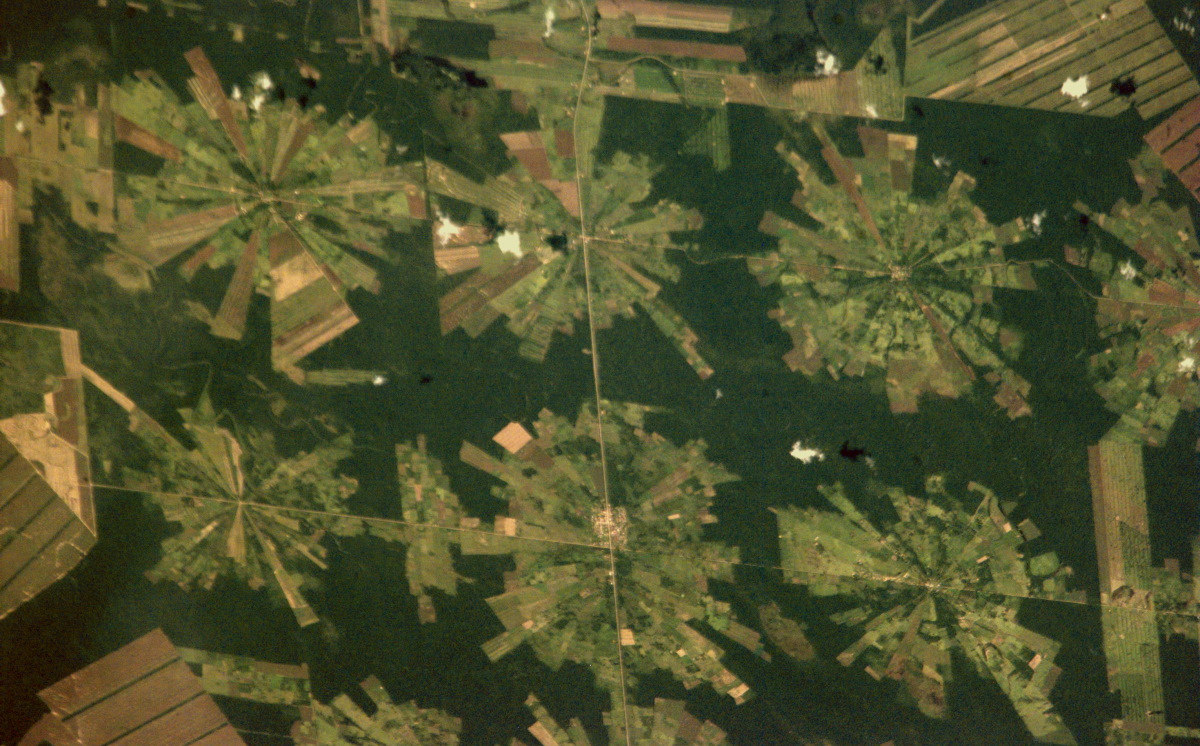A new study finds precautionary measures that decrease animal-human contact and pathogen spread are a sound return on investment. Pandemics, like climate change, need global solutions, a Rice University co-author says.

Deforestation in Maranhão, Brazil, due to illegal timber extraction
As the world reels from the accumulating costs of the ongoing Covid-19 pandemic, it may be time to look toward funding solutions that could prevent future pandemics.
According to recent research published in the journal Science, the estimated expenses of the Covid-19 pandemic may be 500 times greater than the annual cost of funding measures to prevent zoonotic – or animal-borne – disease outbreaks from occurring and escalating into pandemics.
The primary precautionary actions the researchers suggest are to tackle the issues of deforestation and wildlife trade, two main drivers of animal-human contact and pathogen transmission. They say initiatives in these areas are currently underfunded and would produce a high return on investment.
The study’s authors – a team of 17 experts including scientists, economists and conservationists – estimate the total damages from Covid-19 to be $8.1 trillion to $15.8 trillion, a combination of the value of global GDP and lives lost. In comparison, the proposed preventive measures range from $22 billion to $31.2 billion annually, yielding benefits that they say warrant such spending and far outweigh the costs of inaction.
The calculated costs of these efforts are based on the goals of reducing deforestation by half and ending the wild meat trade in China, initiatives that bear the heftiest price tags of all those proposed – up to an annual $9.59 billion and $19.4 billion respectively.
This year, the U.S. Centers for Disease Control and Prevention’s requested budget allotted $509 million to protect Americans from emerging zoonotic diseases – about 2 percent of the study’s suggested total spending. But Ted Loch-Temzelides, an economics professor at Rice University and co-author of the study, says pandemic prevention is a global effort.
“Pandemics, like climate change and many other major problems faced by humanity, are global problems and need global solutions,” he told Texas Climate News.
To prevent future pandemics most effectively, Loch-Temzelides said the study’s suggested measures must all be considered high-priority in terms of funding.
“Both [deforestation and wildlife-related measures] should be pursued equally, together with monitoring measures to detect disease transmission early,” he said.
Additionally, given the high number of zoonotic outbreaks that have occurred in the past 20 years – including Ebola, Nipah virus and SARS – the study’s authors urge that their strategies be included in stimulus and recovery funding.
Sourcing sufficient funds for these measures may not be an easy task, however, and could create a dilemma similar to solving climate change, Loch-Temzelides said.
“Every country prefers if someone else pays. But bigger, richer countries have an extra responsibility. We need global cooperation for a global solution.
“Isolationism, nativism, and finger-pointing are not helpful,” he added. “International organizations like WHO [World Health Organization] are necessary coordinating components.”
Climate benefits
In April, Texas Climate News reported on the link between accelerating rates of ecosystem destruction and disease transmission in large ecosystems like tropical forests.

Deforestation associated with the Tierras Bajas soybean-cultivation project in eastern Bolivia as seen from the International Space Station on April 16, 2001. The “pin wheels” are centered on small communities, spaced evenly at 5-kilometer intervals with roadways connecting town centers.
Deforestation fragments forests into checkerboard-like areas, increasing the amount of exposed perimeter and the likelihood of virus spillover from animals to humans. It also causes biodiversity loss and displaces animals from their habitats, additional factors that increase the rate of disease transmission.
A decrease in deforestation could also generate benefits unrelated to pandemic prevention. The study’s authors estimate a resulting annual reduction in carbon dioxide emissions of 118 million tons – about 0.36 percent of global emissions in 2019. This reduction would generate $4.31 billion in economic benefits, bringing pandemic-prevention costs down to a total of $17.7 billion to $26.9 billion annually.
Though Loch-Temzelides said the study has no major direct connections to Texas since the preventive measures focus on pandemic emergence in other areas of the world, the state would certainly benefit from lower emissions. Temperatures in Texas continue to climb due to CO2 releases and other heat-trapping emissions. According to a 2019 report by the Union of Concerned Scientists, for example, most of the state could experience 100 or more days a year when the heat index reaches 100 degrees F or greater by the end of the century if no action is taken to reduce emissions.
The recent pandemic study also cites global wildlife trade, including live markets and international exportation, as another key source of human-animal contact. Wildlife markets bring animals from forests into cities, potentially exposing a high number of people to zoonoses. Similarly, animals exported from country to country experience market-like conditions (including storage in warehouses) and have the potential to spread pathogens on a global level.
The study’s main proposed solution is to create laws that ban national and international trade of species with the highest disease risk – including rodents, primates, pangolins and bats, the purported source of Covid-19.
The researchers also advocate for funding networks that monitor wildlife trade and enforce related regulations – expenses that may be necessary indefinitely due to the sheer size of the problem.
“Unfortunately, these [wildlife] markets can still exist underground,” said Loch-Temzelides. “Some costs will be needed to monitor and enforce for years to come.”
A few of these monitoring networks – both national and regional – already exist, though they are severely underfunded and lack the ability to effectively regulate global activity, the study says. In addition to supporting existing networks, the authors propose creating a strong global agency to monitor the wildlife trade.
Additional initiatives include ensuring that populations dependent on wild animals for food receive education on handling wildlife and have sustainable access to alternative foods.
In tandem with regulating deforestation and the wildlife trade, researchers also suggest significant spending on discovery of zoonotic diseases and early detection of exposure to prevent large-scale outbreaks.
Further research into the costs of pandemic prevention is necessary, say the study’s authors. Their initial study offers only an economic outline that must be developed and narrowed; they say their findings so far demonstrate the benefits of future research efforts.
Loch-Temzelides said the team has almost finished a sequel study that looks at how other viruses, including HIV and influenza, have impacted humanity throughout the past few decades.
+++++
Kelly Thomas is an independent journalist and a Houstonian. She is a student at Northeastern University, where she studies journalism and environmental studies.
